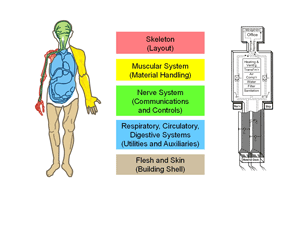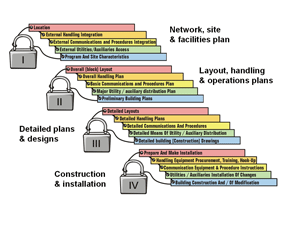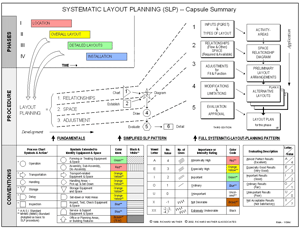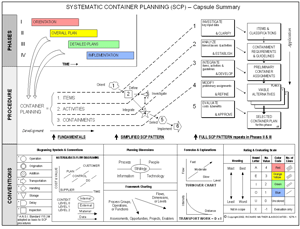Our Family of Systematic Planning MethodsOur mission is one of “helping our clients to help themselves.” We do this with a family of practical methods derived from more than 1000 projects in a wide range of industries. Each method provides a phased, step-by-step approach to recurring challenges and decisions. Our methods are documented in publications and available through training. They are standard practice in leading companies around the world. Licensing, certification, and train-the-trainer programs are available. Systematic Layout Planning (SLP) SLP is the world’s most practical and organized method for rearranging existing or laying out new facilities. It is adaptable to factories, warehouses, offices, labs, hospitals… Published in book form in nine languages, SLP is also available on video. SLP is the procedural basis for most commercial software used by space and layout planners. For an overview and example of manufacturing plant layout click here. Systematic Planning of Manufacturing Cells (SPMC) SPMC is the world’s most practical and comprehensive method for planning manufacturing cells and production lines. SPMC generates physical plans and operating procedures for single-piece or small-batch flow. SPMC also addresses motivation, training, job design, and performance measurement. Published in book form, SPMC is also available on video. Systematic Handling Analysis (SHA) SHA is a companion to the well-recognized SLP and the basis for commercial software used in factory and warehouse flow studies. SHA guides equipment selection and move planning, and ensures a cost-effective material handling system. SHA includes Mag Count (and Macromag) — a way to measure the “transportability” of materials, before knowing the method of moving them. SHA is published in booklet form. Systematic Container Planning (SCP) A companion method to SHA, SCP guides the specification and selection of industrial containers. When the logistics plan calls for returnable containers, SCP assures an effective total system. SCP applies to all levels of container movement — within workcells, between cells and supermarkets within a plant, or between the plant and its external suppliers and customers. LEANplan uses value stream mapping to plan for lean operations — plant wide or across the supply chain. When used with the other Muther methods, LEANplan is the “master method.” SLP, SPMC, SHA, and others follow as needed to enable and support the lean operating plan. MAXiT guides the design of business processes, procedures, and information systems. Developed by High Performance Concepts, Inc., MAXiT is useful when the lean operating plan calls for changes in customer and supplier communications, transportation planning, production scheduling, material control, and cost accounting. Systematic Network Planning (SNP) SNP helps to plan and manage the modeling of logistical networks. It presumes the use of mathematical optimization and software modeling tools. SNP provides standard phases, tasks and key documents for conducting network planning projects of any kind or scale. Additional Planning MethodsSystematic Storage Analysis (SSA) SSA provides a structured method for planning warehouses, distribution centers and storage spaces. A derivative of our popular SLP and SHA methods, SSA links inventory and materials management practices to space and equipment requirements. Long-Range/Strategic Planning of Industrial Facilities (LR/SPIF) We pioneered practical techniques for 10- and 20-year site and facilities planning, and today we offer the world’s leading work course in this approach. Essential during periods of rapid growth or consolidation, our methods ensure that facilities plans support manufacturing & logistics strategies. Systematic Planning of Industrial Facilities (SPIF) SPIF is a total approach of inter-related planning systems, ideal for new construction or major expansions. Documented in a two-volume text, SPIF provides procedures, checklists, and decision-aids for many common issues in new construction projects. On major projects, SPIF is the “master method,” assuring integrated plans for each component of the facility – the layout, material handling, communications, utilities, and the structure or building itself. Systematic Master Site Planning (SMSP) SMSP guides land use and real estate planning. A necessary first phase when developing or re-developing any large industrial site, SMSP is ideal when environmental issues are present. It also applies to military, public, and institutional sites. |

|
| Systematic Planning Methods |







